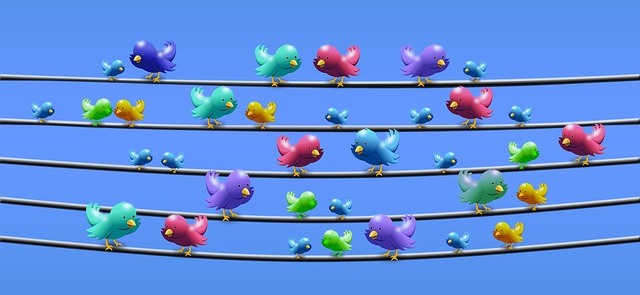 Twitter is cracking down on automated tools, including automated direct messaging and aggressive following and unfollowing that many marketers use to gain followers and promote their brand messages.
Twitter is cracking down on automated tools, including automated direct messaging and aggressive following and unfollowing that many marketers use to gain followers and promote their brand messages.
Third-party apps, such as SocialOomp and CrowedFire, recently turned off their automated direct messaging services and scaled back automated following and unfollowing programs in response to new Twitter terms of service.
Some apps may continue to offer those automated services. But as CrowdFire notes: “These Twitter rules are applicable to all third-party apps. If any third-party application is providing these features as before, then they are in violation of the Twitter rules and this could get your account suspended.”
Effective or Just Annoying?
Marketers’ opinions of automated direct messages, or DMs, vary. Some consider them useful. Others complain that they’re annoying and ineffective and are happy Twitter is restricting the practice. Most of messages are poorly conceived, obviously disingenuous and transparently promotional.
The most common are welcome messages that say something like: “Thanks for following. Connect with me on …”
“I’m already connected with you on Twitter and don’t really know you yet. Why do I need to connect on LinkedIn right now?” writes Christoph Trapp, vice president of content marketing strategy at ScribbleLive. “Annoying marketing techniques will continue until they stop working.”
When Automation Works
Although annoying, the messages can be effective. Trapp included a link to his blog in automated direct messages a couple of years ago. The messages increased blog traffic and subscriptions to his e-newsletter and also generated positive feedback.
“Automation can work great when the information presented is relevant to the person receiving it,” he says.
Melissa Culbertson at Blog Clarity calls auto DMs “evil” – the digital equivalent of unsolicited telephone sales calls. Culblertson recommends these alternatives:
Interact with followers. Reply to someone. Retweet a post. Be helpful. Respond when they ask followers a question. “You don’t have to spend hours doing this,” Culbertson says. “Just a few minutes a day makes a big difference in showing that you’re interested in what people have to say, not just broadcasting your own message.”
Promote yourself. Promotional tweets, such as tweets to join your Facebook page or download a free e-book are acceptable, even expected. Just don’t go overboard. Vary the time of day you promote your links so they reach a wider audience.
When Auto DMs are Permitted
Twitter’s rule against automated DMs is not absolute. The company permits automated direct messages if:
- recipients requested (i.e. opted in) to be contacted via Direct Message or have clearly indicated an intent to be contacted in advance and
- you provide a clear and easy way for users to opt-out of receiving automated Direct Messages, and promptly honor all opt-out requests.
Advertisers, publishers, and brands using auto-response campaigns must request approval and may be subject to additional rules, Twitter warns. Besides forbidding unsolicited automated or bulk direct messages, Twitter also advises users to “be thoughtful about the frequency with which you contact users via Direct Message.”
Twitter Hates Aggressive Following Practices
Twitter also took steps against aggressive following practices, which it defines as “indiscriminately following hundreds of accounts just to garner attention.” It’s part of another questionable practice called aggressive follower churn, or repeatedly following and unfollowing large numbers of users, a tactic used to gain attention, circumvent Twitter’s limits or change follower-to-following ratios.
Marketers, social media influencers and others could use third-party programs to follow and unfollow large numbers of accounts in a short time. In a practice dubbed mimic following, customers provide apps a few user names of ideal followers, and then the app spews out hundreds of similar users to follow.
Bottom Line: Sending automated direct messages on Twitter, a common yet controversial practice, is no longer a viable marketing strategy. Marketers who continue to send the automated messages to Twitter followers risk having their accounts suspended. Although it’s a more time-consuming method, engaging with followers on a personal level will be more effective.
William J. Comcowich founded and served as CEO of CyberAlert LLC, the predecessor of Glean.info. He is currently serving as Interim CEO and member of the Board of Directors. Glean.info provides customized media monitoring, media measurement and analytics solutions across all types of traditional and social media.





So, is it better not to be using any bots and instead do things by your own matter and manually?